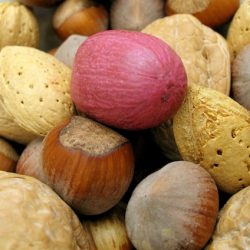SingaporeMotherhood | Baby & Toddler
October 2011
Food Allergies in Children in Singapore: Why Auntie’s Advice Won’t Do

There are plenty of myths about food allergies in Singapore. Myth #1: Not many people have them. Myth #2: Allergies are not a big deal — just a rash around the mouth, or maybe a little diarrhea. Myth #3: Asians don’t get nut allergies — only Caucasians do. Myth #4 (otherwise known as “the old Auntie’s cure”): Give your child a little bit of the food they are allergic to, and they’ll ‘build up their immunity’.
That kind of misinformation can land your child in the hospital.
Here’re some facts.
* About 6% of children in Singapore have food allergies. That’s more than one in 20.
* The most common are eggs, fish, and peanuts, followed by dairy, wheat and soy.
* One study by the National University Hospital did find that there is a lower incidence of nut allergies among Asian Singaporean children compared to Caucasian expatriate kids living here — but that doesn’t mean they’re non-existent.
[banner][/banner]
Nut allergies are the third-highest food allergen among the local population. And the nature of that allergy is changing. A recent study done by KK Women’s and Children’s Hospital found that nuts are now the number-one cause of anaphylaxis (Dictionary.com: exaggerated allergic reaction to a foreign protein resulting from previous exposure to it) in Singapore. Ten years ago, there were no cases of nut-induced anaphylaxis. At that point, Bird’s Nest was the number-one cause of this severe, life-threatening allergic reaction.

Allergies are on the rise worldwide, and nobody is really sure why. Many doctors and researchers support what’s called the ‘hygiene hypothesis’: our immune system is not being stimulated the way it used to be, thanks to cleaner living conditions and the widespread use of antibiotics, and is starting to react to proteins that are not actually a threat to humans. Lack of education is another. A high number of people with peanut allergies in Singapore, for example, have multiple reactions because they keep eating foods with peanut in it.
RASHES & ALLERGIES
Food allergies are a big deal. It’s not just a matter of a rash — allergies are dynamic and a bad reaction can kill you. It’s also very different from food intolerance. Most people mix up the two.
A true food allergy is essentially an immune system malfunction. Your immune system mistakenly perceives a protein — in an egg, a nut or a fish — as an invader, and pumps out a bunch of chemicals, including an ‘allergy’ antibody called IgE, to fight off the invader.
Those chemicals prompt the release of histamines, which cause swelling. That could turn up as a rash, or swelling of the lips or face. The patient may vomit, get cramps, feel dizzy or have trouble breathing.
The most severe allergic reaction is anaphylaxis: this impacts the airways and cardiovascular system. The patient may ‘feel sleepy’ because their blood pressure is dropping to dangerous levels.
If your child says their throat is itchy, or they can’t breathe — or if they look pale or feel sleepy — they may need antihistamines and a shot of adrenaline from their Epipen. This is an instrument that is used for the injection of epinephrine, the first-line treatment for allergic emergencies (anaphylaxis). Then you need to get them to a hospital, fast.
An intolerance does not involve the immune system at all. People with an intolerance have trouble digesting a certain protein, like those found in dairy, or react to certain chemicals in food — or to additives. A food intolerance can cause rashes, the runs, cramps and other symptoms which need to be treated by a doctor. But an intolerance will not induce the rush of antibodies and histamines that occur in an allergic reaction.
Giving your child a little bit of the food they are allergic to will not necessarily help them build up immunity. It can actually make an allergy worse, says Dr Liew Woei Kang, a paediatric immunologist at SBCC Baby & Child Clinic at Gleneagles Medical Centre. Once your immune system is ‘sensitised’ to the protein, it may respond in a much worse way the next time it encounters that protein.
PRICKED FOR A PURPOSE
If you suspect a food allergy, get a skin prick test. This is the most accurate way to diagnose an allergy. The doctor may conduct an oral food challenge, where they give a small amount the food in a clinical setting. This should never be done at home.
“They (the child) could have a very severe, life threatening reaction,” says Dr Liew. If that happens, you want to be at a hospital. Allergic reactions often set in within minutes, but they can come in repeat waves. A doctor at KK Women’s & Children’s Hospital shared that a child suffered anaphylaxis during a food challenge: she had to inject the child with three epipens to get it under control. When one injection wears off, a patient can suffer a second wave of this severe reaction, hours after they ate the offending food.
Dr Liew recommends that patients avoid the food they are allergic to. Re-test your child after a year or two. About 50% of children who are allergic to milk, eggs, wheat and soy will grow out of it by the age of three; 75% will grow out by the age of five.
Giving children ‘bits’ of the food they are allergic to will actually keep the immune system sensitised to that protein and on high alert — and can postpone the child’s ability to outgrow the allergy, says Dr Liew. His advice? “It’s better to just avoid the food. Then they have a better chance of moving out of the allergy.”
Cris Sivashanmugam, co-editor, sneezywheezy.com
All content from this article, including images, cannot be reproduced without credits or written permission from SingaporeMotherhood.
Follow us on Facebook, Instagram, and Telegram for the latest article and promotion updates.





